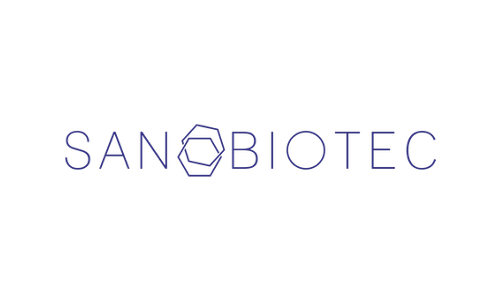Next up on our introduction to minor cannabinoids: Cannabidivarin (CBDV). So, what is the CBDV cannabinoid? Sanobiotec, a well renowned producer of both mainstream and rare cannabinoids, explains.
Simply said, CBDV is another part of the cannabis plant, a compound found within the genetic make up. However, to us at Sanobiotec, CBDV is so much more than just another phytocannabinoid found within the cannabis plant.
The CBDV cannabinoid harbours a lot of powerful potential, especially when it comes to preventing epileptic seizures. Of course, it’s always a good idea to be cautious with things like this, so as to not raise expectations unrealistically. On the other hand though, when all the evidence is suggesting that CBDV is incredibly effective in the therapeutic prevention and treatment of seizures, it’s hard to not get a little excited.
Structurally and functionally, CBDV is very similar to the major cannabinoid CBD (cannabidiol) But unlike CBD, CBDV is understood to modulate its primary physiological effects independently of the endocannabinoid receptors CB1 and CB2. It’s much less well known too, Understandably so, given the fact that it occurs in much lower percentages than the major cannabinoid it is similar to.
So, is CBDV another promising rare compound then? We certainly think so.
But where do we get it from? Where can CBDV be found?
Primarily sourced from Cannabis Sativa strains found in Africa and Asia, higher concentrations of CBDV are found in strains of cannabis plant with a low THC and a higher CBD content. Typically, higher percentages of THC would be considered to have more ‘trippy’ effects, making strains with high THC contents more popular for recreational users. That’s not what we are looking at though. We’re looking at the therapeutic benefits of minor cannabinoids such as CBDV.
CBDV’s potential may not be limited to just a few benefits. Advanced research and development provides the opportunity to explore the benefits of this minor cannabinoid. For starters, the receptor TRPV1 is also known to regulate pain transmission and modulation, raising the question as to whether CBDV could be used to ameliorate neuropathic pain.
This is quite exciting to us at Sanobiotec, and so is the fact that preliminary evidence suggests that CBDV displays anti-inflammatory effects, as it binds to the TRPA1 receptor.
Recent relevant research about CBDV
It’s all getting a bit technical now, so what does all this mean? A number of things actually, but these early findings have kick started several preclinical studies into CBDV, to explore its potential for treating things like:
- Inflammatory bowel disease
- Crohn’s disease
- Ulcerative colitis
- Duchenne muscular dystrophy
Interestingly, CBDV may also modulate anti-nausea effects, by acting as an antagonist to CB1 receptors.
How does one find out whether any or all of the above can actually make a difference to people’s lives?
It’s all down to research and development. Recent research and development into CBDV has looked to explore its applications and effectiveness for:
- Nausea
- ASD
- The brain and peripheral nervous system
- Immunity
- Epilepsy
- Seizures
(This is a summary of the research interests for the cannabinoid being discussed. These statements have not yet been evaluated by regulatory bodies such as Food and Drug Administration. This ingredient is not confirmed to diagnose, treat, cure or prevent any disease. Sanobiotec has provided this summary solely to provide the reader with information on the types of studies being conducted on cannabinoids).

Article by: Sanobiotec
Lithuanian company specialized in producing pure cannabinoids
https://cantopia.eu/seller/sanobiotec/

